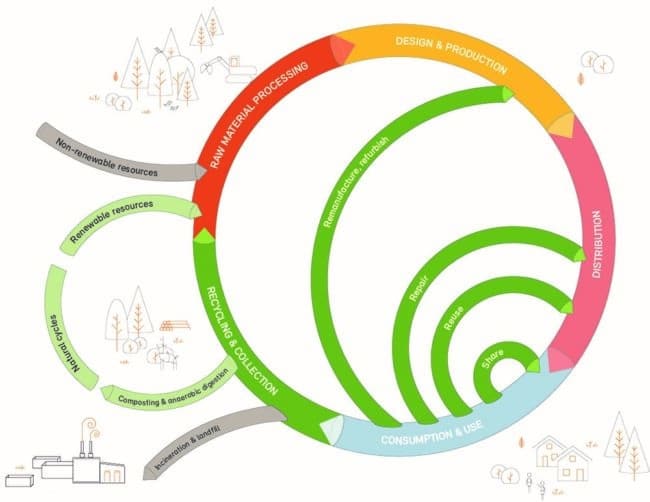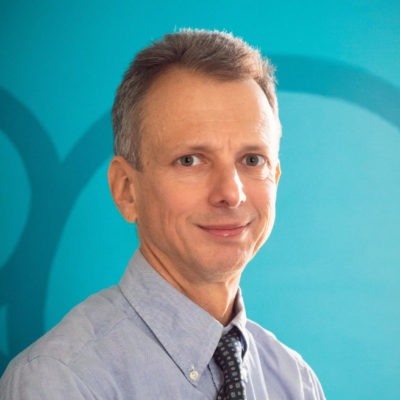
It is hard to escape hearing or reading almost daily about the circular economy (CE), but are we all talking about the same thing? Is this the latest corporate fashion, management jargon, latest hue of greenwashing, or the beginning of a genuine transformation towards a better, more inclusive society, with healthy ecosystems and universal wellbeing? Today’s world is 8.6% circular, meaning 91.4% of all materials used are freshly extracted every year with all associated costs and pollution – so there is a lot of room for improvement.
The combined climate and biodiversity crises, together with social exclusion, stress the urgency of acting. A sustainable society would satisfy human needs for all, regardless of the ability to pay, within the limits of our ecosystems, called planetary boundaries. How does CE help achieve this?
There are many schools of thought of the circular economy, summarized in hundreds of papers and books, emphasizing different aspects of theory and action. In science, this is called an “essentially contested concept”. The only things everyone can agree on is reducing both resource extraction and waste, and using clean energy. Beyond this, “Cradle to Cradle” focuses on material design and separate cycles for biological and “technical” (i.e. not biodegradable) materials, the “Blue Economy” on entrepreneurs seizing the opportunity of millions of new jobs and higher profits due to the elimination of waste, or the “Performance Economy” selling the performance or output of a product rather than the product itself (e.g. paying for light instead of the lamp) and using resources more efficiently for a longer time. On the other side, “Regenerative Design” shifts power from corporations to local communities using resources to satisfy their own needs rather than profits, and mimics natural ecosystems. A “Permacircular” economy extends company-wide CE to the whole economy, degrows until planetary boundaries are respected, and builds a new culture of sufficiency. The much communicated Ellen MacArthur Foundation’s “Butterfly” diagram is a company-level adaptation of Cradle to Cradle cycles, adding sector specifics, yet not questioning big issues like growth or scale.
What does this mean for the BSL community? CE can be a very good tool, complementing Human Needs and Planetary Boundaries, within a vision of strong sustainability, which also avoids greenwashing and fake claims. To facilitate our collective actions, we are starting to build knowledge and capabilities, and facilitating action. A new MIB course “Circular Economy” launched in 2022, for the first time (of any CE course anywhere to our knowledge) combining a theoretical background with several workshops on redesigning key aspects of the economy for circularity: redesigning products, redesigning supply chains, redesigning provisioning systems, and redesigning satisfiers.
Also for the first time at BSL, we organized a Circular Economy conference on Wednesday 27.04.2022, sharing work by our community, here a a few highlights:
- Pauline Richaud, student in the new MIB course, analyzed clothing and fashion, a major problem today, looking into eco-design, single-material fabrics, flax and hemp, circular business models like renting and reselling, local repair and upcycling services and workshops, and regulating or taxing fast fashion.
- Trevor Yahn, student in the new MIB course, focused on government action and how the rules of the market could be changed to move from today’s (weak) ESG to true circularity, in particular finding inspiration in “Designing Climate Solutions”, such as long term planning, self-tightening regulation, focus on outcomes not technology, and simplify regulation to avoid loopholes.
- Alessandra Troiano, EMBA, reflected how her company, producing PV modules in Switzerland, could redesign the product for (less material, modular repairability), supply chain (EU, rail transport, local repair and reselling), and provisioning systems looking at the whole electricity system. Asking even more ambitiously, how could a PV-based local energy system help re-empower communities, improve social connections, and create local opportunities?
- Sibylle Grass, EMBA, shared her passion and entrepreneurial success developing a regenerative business model while applying the principles of the circular economy to a local honey business with a global reach.
- … the apéritif that followed combined locally-made delicious vegetable soup in reusable packaging, local organic wines, a Bee Friends honey tasting, … and lots of fun!
Get in touch with us for future CE activities, conferences, case studies, internships for our students, company projects, course participation, guest speakers, or any other good suggestion. And please start reflecting in a holistic way how CE can help us create a better society.

